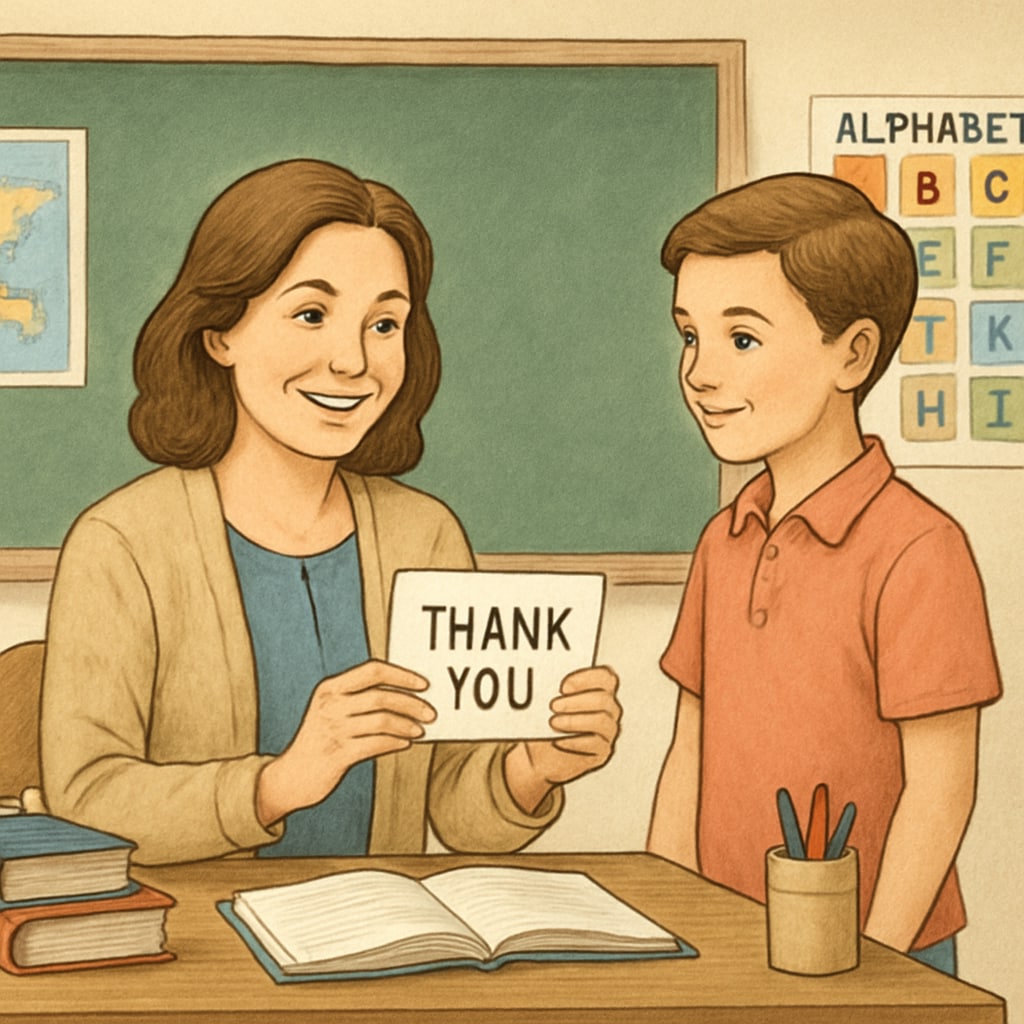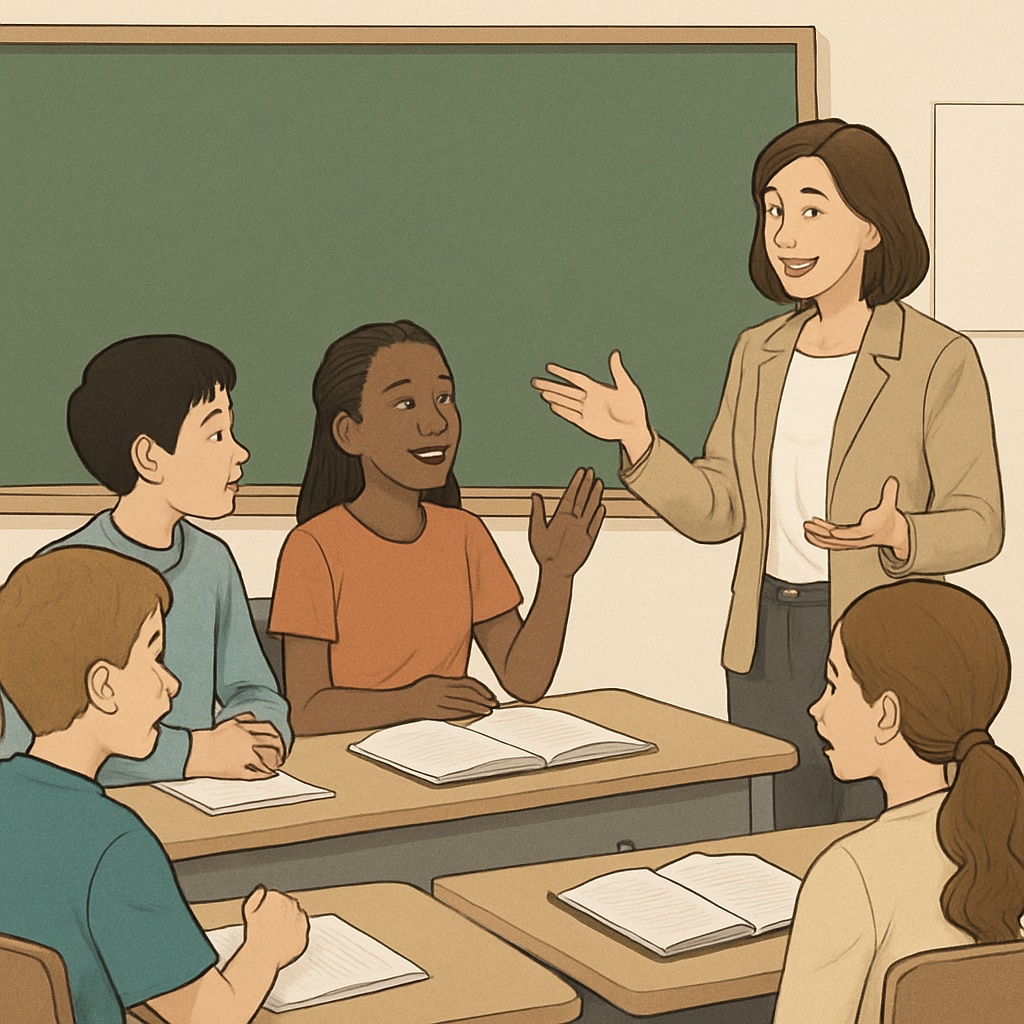In the realm of education, a simple act of gratitude can leave an indelible mark. The impact of students’ gratitude, teachers’ emotional connection, and heartfelt appreciation cannot be underestimated. When students express sincere thanks to their educators, it transcends mere words, creating a profound emotional bond that enriches the teaching experience. This article delves into how such moments of appreciation influence teachers’ emotional well-being, foster a positive learning environment, and ultimately strengthen the bridge of understanding between teachers and students.
The Power of a Sincere “Thank You”
For teachers, their profession is far more than a job; it is a calling to inspire, guide, and shape the future. Amidst lesson planning, grading, and mentoring, a heartfelt “thank you” from a student can serve as a powerful reminder of the difference they make. These moments of gratitude validate their efforts, making the challenges of teaching feel worthwhile.
Acknowledgment from students also has a ripple effect. It boosts teachers’ morale, encourages them to continue their efforts with renewed vigor, and fosters a sense of professional fulfillment. According to a Britannica article on teachers, emotional satisfaction is a core component of long-term success in education. Gratitude, therefore, becomes not just a reward but a key driver of motivation.

Building Emotional Connections Through Gratitude
Gratitude is more than a polite gesture; it is an emotional connector. When students express appreciation, they acknowledge their teachers’ efforts, creating an atmosphere of mutual respect. Such an environment encourages open communication and a deeper understanding between students and teachers.
These emotional connections are vital for effective education. As noted in a Wikipedia article on teacher-student relationships, mutual respect lays the foundation for meaningful learning experiences. Teachers who feel appreciated are more likely to invest in their students’ development, while students who feel heard and valued are more motivated to engage actively in their education.
This dynamic is particularly evident in classrooms where gratitude is part of the culture. For example, handwritten notes, verbal expressions of thanks, or even small acts of kindness can create a cycle of positivity that benefits both teachers and students.

Gratitude as a Catalyst for Educational Success
Emotional well-being is closely tied to professional success, and teaching is no exception. When teachers receive gratitude from their students, it reinforces their sense of purpose and commitment to their mission. This, in turn, enhances their ability to create engaging and impactful lessons.
Moreover, gratitude helps in building a supportive classroom environment. When students see their peers expressing thanks, it encourages a culture of appreciation and respect. This collective positivity not only improves the emotional climate but also has measurable academic benefits. Studies have shown that classrooms with strong teacher-student relationships tend to have higher levels of student achievement and lower dropout rates.
How to Foster Gratitude in the Classroom
Encouraging gratitude is a shared responsibility between teachers and students. Here are some practical ways to cultivate this culture:
- Model Gratitude: Teachers can set an example by expressing their own gratitude, whether to students, colleagues, or parents.
- Create Opportunities: Incorporate gratitude activities, such as thank-you cards or reflective journaling, into classroom routines.
- Celebrate Small Wins: Recognize and appreciate students’ efforts, no matter how small, to inspire reciprocal expressions of thanks.
- Encourage Reflection: Ask students to reflect on the contributions of others and express their appreciation during group discussions.
By embedding gratitude into the fabric of classroom culture, teachers and students alike can experience its transformative power.
Conclusion: The Lasting Impact of Gratitude
As this article has explored, the impact of students’ gratitude, teachers’ emotional impact, and heartfelt connections is profound. A sincere “thank you” from a student can be one of the brightest moments in a teacher’s career, serving as a reminder of the value and importance of their work. Beyond boosting emotional well-being, such gratitude fosters mutual respect, enhances educational outcomes, and creates a foundation for lifelong learning.
In the end, gratitude is not just about acknowledging effort; it is about building relationships and creating a positive, supportive environment where both teachers and students can thrive. So, the next time you feel grateful for your teacher, don’t hesitate to say it. Those two words — “thank you” — may just become their brightest star.
Readability guidance: This article uses short paragraphs, lists, and clear transitions to ensure readability. The tone is professional yet approachable, focusing on the emotional and practical aspects of gratitude in education. The content avoids jargon and maintains a CEFR B1-B2 vocabulary level for accessibility.


